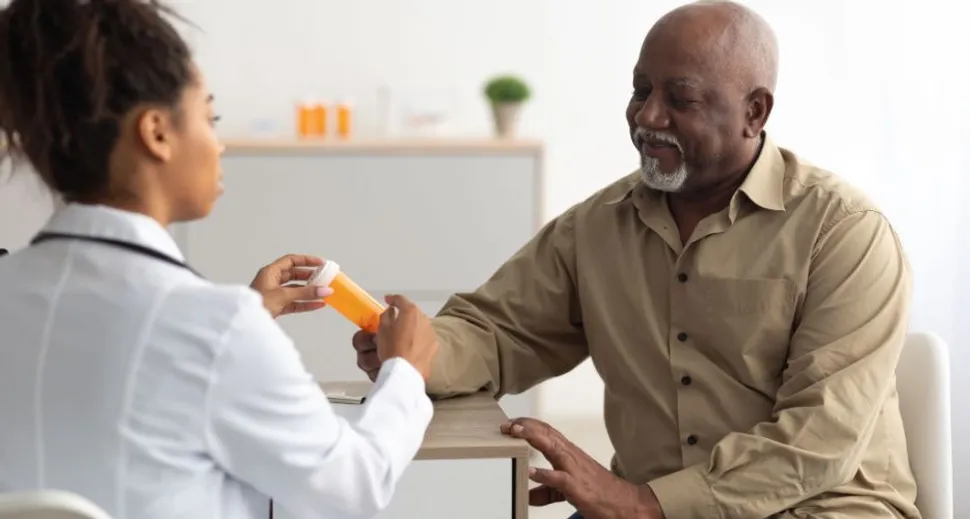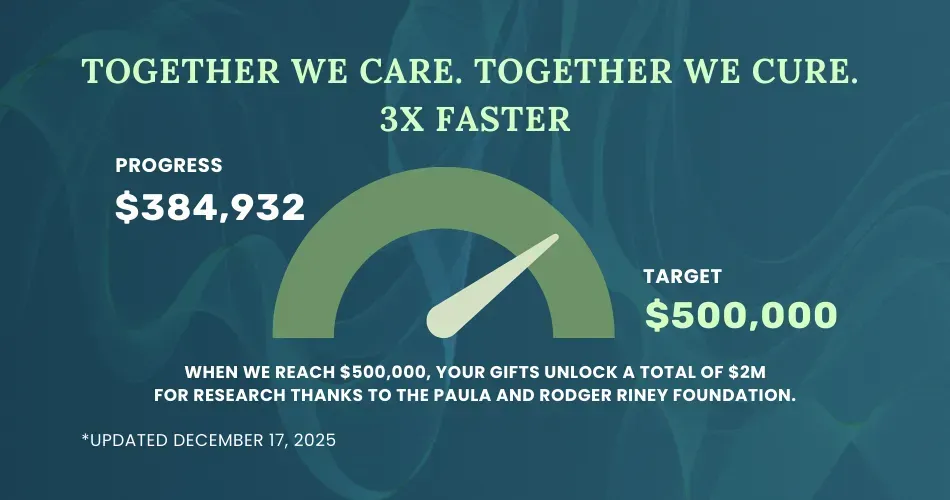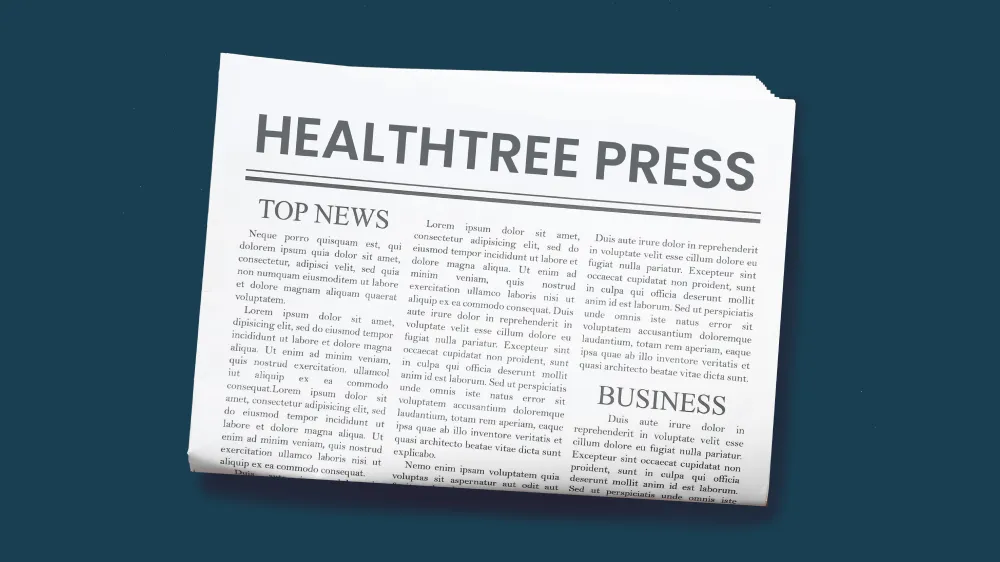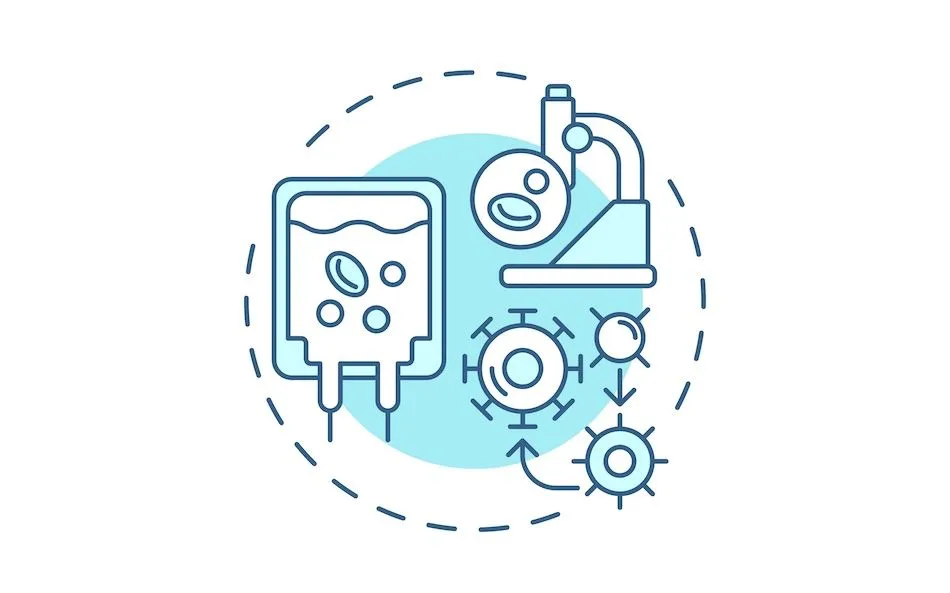BBC: A Patient-Led Foundation Goes Back to Its Roots – and Extends its Branches – to Help Multiple Myeloma Patients

When Jenny Ahlstrom was diagnosed with multiple myeloma at age 43 in 2010, she realized immediately that access to more information could lead to better outcomes. But unanswered questions seemed to surround her. Why were details on clinical trials so hard to uncover and understand? Why was information about her disease so hard to find? As she worked to comprehend multiple myeloma better and gather information to inform her course of treatment, Ahlstrom quickly discovered that she had to become her own best advocate.
“Myeloma is very complicated, and as patients, understanding the right course for your treatment isn’t always clear,” Ahlstrom explains. “It doesn’t seem fair that patients have to become more educated to get the best care, but they actually do. We’re here to make that education easier during an already challenging time.”
That’s why Ahlstrom founded HealthTree Foundation, a non-profit organization bringing together her experience as a patient, along with her background in communications and technology, to help others. Ten years later, HealthTree continues to support patients with blood cancers, in addition people with solid-tumor cancers and other terminal diseases, via its online advocacy and educational tools. It retains a special emphasis on the cancer at the core of Ahlstrom’s personal and professional journey, multiple myeloma.
As her treatment continued and she met more people within the multiple myeloma community, the need to fill gaps in care and knowledge became even more clear to Ahlstrom. For example, multiple myeloma patients didn’t have an online directory of local specialists, so HealthTree built one. The Foundation also developed a coaching programme based on feedback that mentorship could be helpful for patients, given how complex the condition is.
While the HealthTree Foundation has helped thousands of multiple myeloma patients better understand and manage their disease, unmet needs persist. That’s why the Foundation jumped at the opportunity to participate in a new programme from GSK, the Target the Future Think Tank Challenge, to address unmet needs for multiple myeloma patients through innovative solutions. The team’s proposal rose above more than 20 entries from around the world based on its ideas to improve access, equitable care and quality of life for the multiple myeloma community. With GSK’s support and this £70,000 grant awarded, Ahlstrom aims to bolster ways to reach communities of color, who experience multiple myeloma at a higher rate, but are unfortunately underrepresented in clinical research, and often experience poorer outcomes. Those outcomes include lower usage of newer drug treatments, lower access to stem cell treatments, and higher death rates.
The goal: build bridges to help more multiple myeloma patients understand their disease, and based on this understanding, enable better access to quality care and community support. All of this comes together by connecting patients and caregivers with healthcare professionals, clinical researchers, and each other.
“It took me six to eight years to get up to speed on my own disease in earnest,” Ahlstrom shares. “I was learning a little here and a little there. Yet I’m alive today because I received the right guidance and treatments. By decoding the data and sharing our collective experiences, patients shouldn’t have to repeat that work,” she says.
Targeting a Better Future for Every Patient
With this grant from GSK, HealthTree will focus on improving access, education and support for Black and Spanish-speaking multiple myeloma patients.
Specifically, Target the Future will help HealthTree develop its Black Myeloma Health initiative, which will include a focused website for Black patients. Ahlstrom sees this as vital, because every patient community has different needs and preferences, and people with African ancestry in particular are overrepresented in multiple myeloma diagnoses, Ahlstrom explains. Black patients in the United States have twice the risk of developing multiple myeloma and are diagnosed at younger ages, and the mortality rate in people of African descent is two times higher than people of Caucasian descent.
After that diagnosis, the learning curve for patients is steep. A considerable amount of time is needed to understand both the specifics of each patient’s multiple myeloma diagnosis, and the available treatment options. Knowing that, it’s vital that Black patients have access to targeted, accessible resources about treatment options and clinical trials, Ahlstrom says.
“Patients want to know that material is curated and communicated in a way that makes the most sense to them,” she says. The site will highlight Black patient stories and Black multiple myeloma specialists, with articles and other resources tailored to the specific needs of these patients, including digital brochures and the development of compassionate online communities.
HealthTree also noticed a gap in equitable care for multiple myeloma patients who speak Spanish. Language barriers can put patients in a position where they don’t understand everything health professionals say in their appointments, leaving them with incomplete information about their own condition or care options.
GSK’s Target the Future grant will fund Spanish-speaking patient navigators and Spanish-language translation of HealthTree’s many resources. The Foundation’s HealthTree for Mieloma Multiple initiative will help the Foundation connect patients to the many Spanish-speaking members of their team, who will listen and can provide support, clinical referral forms and translation of all existing HealthTree materials.
“Better in-language education can enable more patients to make more informed choices about their care,” Ahlstrom says. As the initiatives are developed, HealthTree will measure everything: from the number of website visitors to responses from patient outreach in order to optimize services. They also plan to run pilots through several healthcare facility partners, to pinpoint which resources patients find most valuable. The ultimate aim of the program is to improve treatment outcomes for all multiple myeloma patients.
What is Multiple Myeloma?
Optimizing patient support is critical, as more than 175,000 people around the world are diagnosed with multiple myeloma each year. Multiple myeloma is a rare cancer that forms in plasma cells, a type of white blood cells. When someone has multiple myeloma, cancerous cells crowd out healthy ones by accumulating in the bone marrow and produce harmful proteins instead of helpful antibodies.
Diagnosing multiple myeloma can take time, and its ideal treatment plan varies based on several factors, including the stage of disease, the speed of the disease’s progression and the patient’s symptoms and comorbidities. Common complications include frequent infections, bone pain or fractures, anemia, and impaired kidney function. These complications are compounded by the disparities Ahlstrom aims to address through this grant, and this work complements among the many ways her team will continue to provide assistance.
Educating Patients and Caregivers – and Advancing Research
Among the other resources HealthTree providers, caregiver education can be incredibly valuable for the patient and their loved ones, Ahlstrom says. Patients’ family members and friends can educate and equip themselves to step in and support their loved one. They can find answers about what questions they can ask and what they can do during difficult moments, from the time of diagnosis to treatment, to participation in a clinical trial, to a potential relapse.
Another effort includes the HealthTree University, which explains available treatment options, helps people empower themselves as patients, and provides information on handling finances during cancer. With 600 video lessons and 25 classes delivered by more than 150 physician educators, HealthTree’s resources offer comprehensive primers for multiple myeloma patients and their families and caregivers.
The information is always patient-centered and presented clearly, Ahlstrom says. “It’s to make those connections so patients feel like, ‘I can get the care I need, I can ask questions, and they can explain it to me in a way I can understand.’
Another priority for HealthTree is inviting the patient community to contribute data to speed up the work to find a cure for multiple myeloma. Fostering connections between patients and the research community has been part of HealthTree’s work since the beginning, Ahlstrom says.
The Foundation’s HealthTree Podcast for Multiple Myeloma, features hour-long interviews hosted by patients with leading experts in the condition who have open clinical trials. “The goal is to interview the researchers and allow them to share, in a patient-friendly language, what the clinical trial is, why it was open, who should join, what it was all about,” Ahlstrom says.
By participating in surveys, studies, and clinical trials, patients participate in different ways of learning about their disease. “There’s a lot we can contribute, as patients, that we didn’t realize because we didn’t ever have the tools to do that – and now we do,” she says.
Targeting the Future
“Our Foundation has tried to go really deep on multiple myeloma in many ways,” Ahlstrom notes. We’ve seen remarkable progress in research and therapies and Target the Future will strengthen our ability to reach and serve even more patients to make them aware of their options, she says.
That matters to Ahlstrom because from her perspective, if the best tools and resources don’t get to patients when they need them, they haven’t done any good.
“The concept of time takes on new meaning for people with an incurable cancer,” she explains. “That’s why we’re grateful to GSK and its Target the Future program for the support to accelerate efforts to alleviate patients’ challenges and help people get ahead of this disease, aided by others who are doing the same.”
When Jenny Ahlstrom was diagnosed with multiple myeloma at age 43 in 2010, she realized immediately that access to more information could lead to better outcomes. But unanswered questions seemed to surround her. Why were details on clinical trials so hard to uncover and understand? Why was information about her disease so hard to find? As she worked to comprehend multiple myeloma better and gather information to inform her course of treatment, Ahlstrom quickly discovered that she had to become her own best advocate.
“Myeloma is very complicated, and as patients, understanding the right course for your treatment isn’t always clear,” Ahlstrom explains. “It doesn’t seem fair that patients have to become more educated to get the best care, but they actually do. We’re here to make that education easier during an already challenging time.”
That’s why Ahlstrom founded HealthTree Foundation, a non-profit organization bringing together her experience as a patient, along with her background in communications and technology, to help others. Ten years later, HealthTree continues to support patients with blood cancers, in addition people with solid-tumor cancers and other terminal diseases, via its online advocacy and educational tools. It retains a special emphasis on the cancer at the core of Ahlstrom’s personal and professional journey, multiple myeloma.
As her treatment continued and she met more people within the multiple myeloma community, the need to fill gaps in care and knowledge became even more clear to Ahlstrom. For example, multiple myeloma patients didn’t have an online directory of local specialists, so HealthTree built one. The Foundation also developed a coaching programme based on feedback that mentorship could be helpful for patients, given how complex the condition is.
While the HealthTree Foundation has helped thousands of multiple myeloma patients better understand and manage their disease, unmet needs persist. That’s why the Foundation jumped at the opportunity to participate in a new programme from GSK, the Target the Future Think Tank Challenge, to address unmet needs for multiple myeloma patients through innovative solutions. The team’s proposal rose above more than 20 entries from around the world based on its ideas to improve access, equitable care and quality of life for the multiple myeloma community. With GSK’s support and this £70,000 grant awarded, Ahlstrom aims to bolster ways to reach communities of color, who experience multiple myeloma at a higher rate, but are unfortunately underrepresented in clinical research, and often experience poorer outcomes. Those outcomes include lower usage of newer drug treatments, lower access to stem cell treatments, and higher death rates.
The goal: build bridges to help more multiple myeloma patients understand their disease, and based on this understanding, enable better access to quality care and community support. All of this comes together by connecting patients and caregivers with healthcare professionals, clinical researchers, and each other.
“It took me six to eight years to get up to speed on my own disease in earnest,” Ahlstrom shares. “I was learning a little here and a little there. Yet I’m alive today because I received the right guidance and treatments. By decoding the data and sharing our collective experiences, patients shouldn’t have to repeat that work,” she says.
Targeting a Better Future for Every Patient
With this grant from GSK, HealthTree will focus on improving access, education and support for Black and Spanish-speaking multiple myeloma patients.
Specifically, Target the Future will help HealthTree develop its Black Myeloma Health initiative, which will include a focused website for Black patients. Ahlstrom sees this as vital, because every patient community has different needs and preferences, and people with African ancestry in particular are overrepresented in multiple myeloma diagnoses, Ahlstrom explains. Black patients in the United States have twice the risk of developing multiple myeloma and are diagnosed at younger ages, and the mortality rate in people of African descent is two times higher than people of Caucasian descent.
After that diagnosis, the learning curve for patients is steep. A considerable amount of time is needed to understand both the specifics of each patient’s multiple myeloma diagnosis, and the available treatment options. Knowing that, it’s vital that Black patients have access to targeted, accessible resources about treatment options and clinical trials, Ahlstrom says.
“Patients want to know that material is curated and communicated in a way that makes the most sense to them,” she says. The site will highlight Black patient stories and Black multiple myeloma specialists, with articles and other resources tailored to the specific needs of these patients, including digital brochures and the development of compassionate online communities.
HealthTree also noticed a gap in equitable care for multiple myeloma patients who speak Spanish. Language barriers can put patients in a position where they don’t understand everything health professionals say in their appointments, leaving them with incomplete information about their own condition or care options.
GSK’s Target the Future grant will fund Spanish-speaking patient navigators and Spanish-language translation of HealthTree’s many resources. The Foundation’s HealthTree for Mieloma Multiple initiative will help the Foundation connect patients to the many Spanish-speaking members of their team, who will listen and can provide support, clinical referral forms and translation of all existing HealthTree materials.
“Better in-language education can enable more patients to make more informed choices about their care,” Ahlstrom says. As the initiatives are developed, HealthTree will measure everything: from the number of website visitors to responses from patient outreach in order to optimize services. They also plan to run pilots through several healthcare facility partners, to pinpoint which resources patients find most valuable. The ultimate aim of the program is to improve treatment outcomes for all multiple myeloma patients.
What is Multiple Myeloma?
Optimizing patient support is critical, as more than 175,000 people around the world are diagnosed with multiple myeloma each year. Multiple myeloma is a rare cancer that forms in plasma cells, a type of white blood cells. When someone has multiple myeloma, cancerous cells crowd out healthy ones by accumulating in the bone marrow and produce harmful proteins instead of helpful antibodies.
Diagnosing multiple myeloma can take time, and its ideal treatment plan varies based on several factors, including the stage of disease, the speed of the disease’s progression and the patient’s symptoms and comorbidities. Common complications include frequent infections, bone pain or fractures, anemia, and impaired kidney function. These complications are compounded by the disparities Ahlstrom aims to address through this grant, and this work complements among the many ways her team will continue to provide assistance.
Educating Patients and Caregivers – and Advancing Research
Among the other resources HealthTree providers, caregiver education can be incredibly valuable for the patient and their loved ones, Ahlstrom says. Patients’ family members and friends can educate and equip themselves to step in and support their loved one. They can find answers about what questions they can ask and what they can do during difficult moments, from the time of diagnosis to treatment, to participation in a clinical trial, to a potential relapse.
Another effort includes the HealthTree University, which explains available treatment options, helps people empower themselves as patients, and provides information on handling finances during cancer. With 600 video lessons and 25 classes delivered by more than 150 physician educators, HealthTree’s resources offer comprehensive primers for multiple myeloma patients and their families and caregivers.
The information is always patient-centered and presented clearly, Ahlstrom says. “It’s to make those connections so patients feel like, ‘I can get the care I need, I can ask questions, and they can explain it to me in a way I can understand.’
Another priority for HealthTree is inviting the patient community to contribute data to speed up the work to find a cure for multiple myeloma. Fostering connections between patients and the research community has been part of HealthTree’s work since the beginning, Ahlstrom says.
The Foundation’s HealthTree Podcast for Multiple Myeloma, features hour-long interviews hosted by patients with leading experts in the condition who have open clinical trials. “The goal is to interview the researchers and allow them to share, in a patient-friendly language, what the clinical trial is, why it was open, who should join, what it was all about,” Ahlstrom says.
By participating in surveys, studies, and clinical trials, patients participate in different ways of learning about their disease. “There’s a lot we can contribute, as patients, that we didn’t realize because we didn’t ever have the tools to do that – and now we do,” she says.
Targeting the Future
“Our Foundation has tried to go really deep on multiple myeloma in many ways,” Ahlstrom notes. We’ve seen remarkable progress in research and therapies and Target the Future will strengthen our ability to reach and serve even more patients to make them aware of their options, she says.
That matters to Ahlstrom because from her perspective, if the best tools and resources don’t get to patients when they need them, they haven’t done any good.
“The concept of time takes on new meaning for people with an incurable cancer,” she explains. “That’s why we’re grateful to GSK and its Target the Future program for the support to accelerate efforts to alleviate patients’ challenges and help people get ahead of this disease, aided by others who are doing the same.”
about the author
Jennifer Ahlstrom
Myeloma survivor, patient advocate, wife, mom of 6. Believer that patients can contribute to cures by joining HealthTree Cure Hub and joining clinical research. Founder and CEO of HealthTree Foundation.
More on HealthTree Press
Trending Articles
Upcoming Events




Get the Latest Multiple Myeloma Updates, Delivered to You.
By subscribing to the HealthTree newsletter, you'll receive the latest research, treatment updates, and expert insights to help you navigate your health.
Together we care.
Together we cure.
3x Faster.













